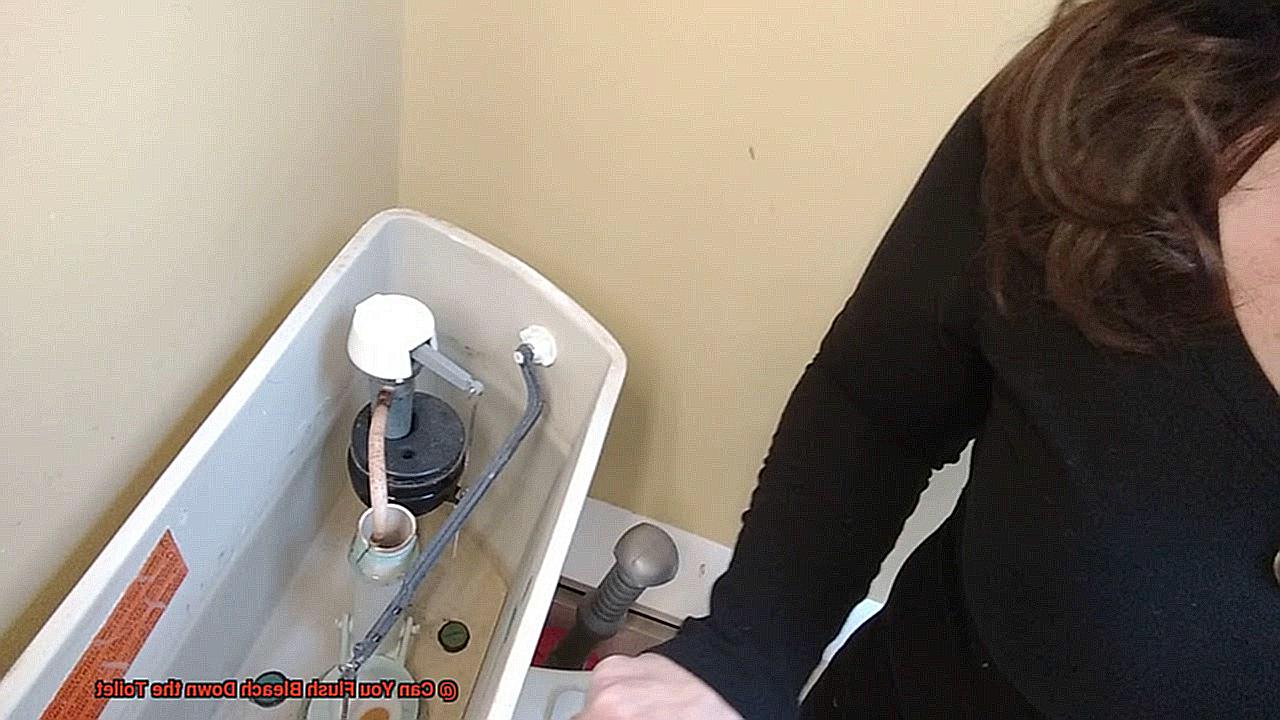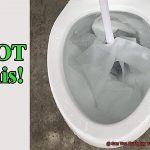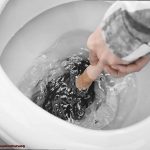Do you love using bleach to keep your toilet sparkling clean? Or maybe you’ve accidentally spilled some bleach into the bowl and thought nothing of flushing it down? While bleach is a common household cleaning agent, you may be wondering if it’s safe for your plumbing and the environment to flush bleach down the toilet.
Before we dive into the details of whether or not it’s safe to flush bleach down the toilet, let’s talk about what makes it such a popular cleaning agent. Bleach is well-known for its abrasive qualities, making it fantastic for removing tough stains and clearing drains. However, it’s also important to understand that bleach can have harmful effects when combined with other cleaning agents or when dumped into the wrong place.
In this blog post, we’ll explore everything you need to know about flushing bleach down the toilet. We’ll discuss the potential damage it can cause to your plumbing and septic system, as well as the adverse impact it can have on the environment. By the end of this post, you’ll be armed with knowledge about safe and proper ways to dispose of bleach – along with other household cleaning agents that should avoid running down your pipes or being flushed down the toilet.
Let’s get started.
Contents
What is Bleach?
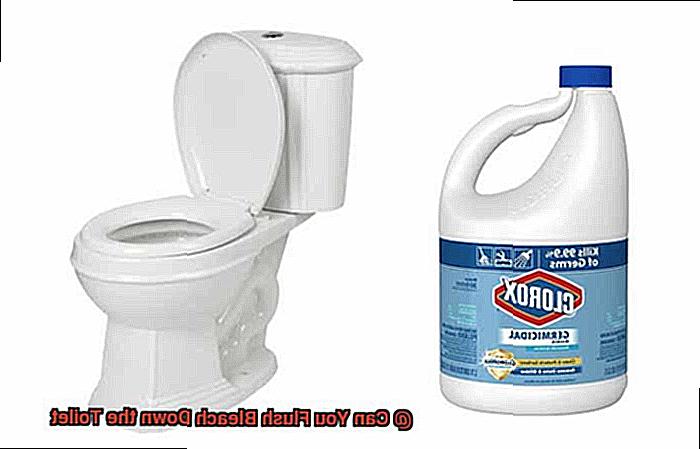
Whether we’re tackling tough stains or disinfecting surfaces, bleach is a go-to cleaning product for many of us. But what exactly is bleach, and how can we use it safely and responsibly?
At its core, bleach is a highly reactive and corrosive compound called sodium hypochlorite. When mixed with water, it releases chlorine gas, which can be toxic if inhaled in large amounts. Bleach comes in different strengths and formulations, with the concentration determining its effectiveness and the amount of time it takes to work.
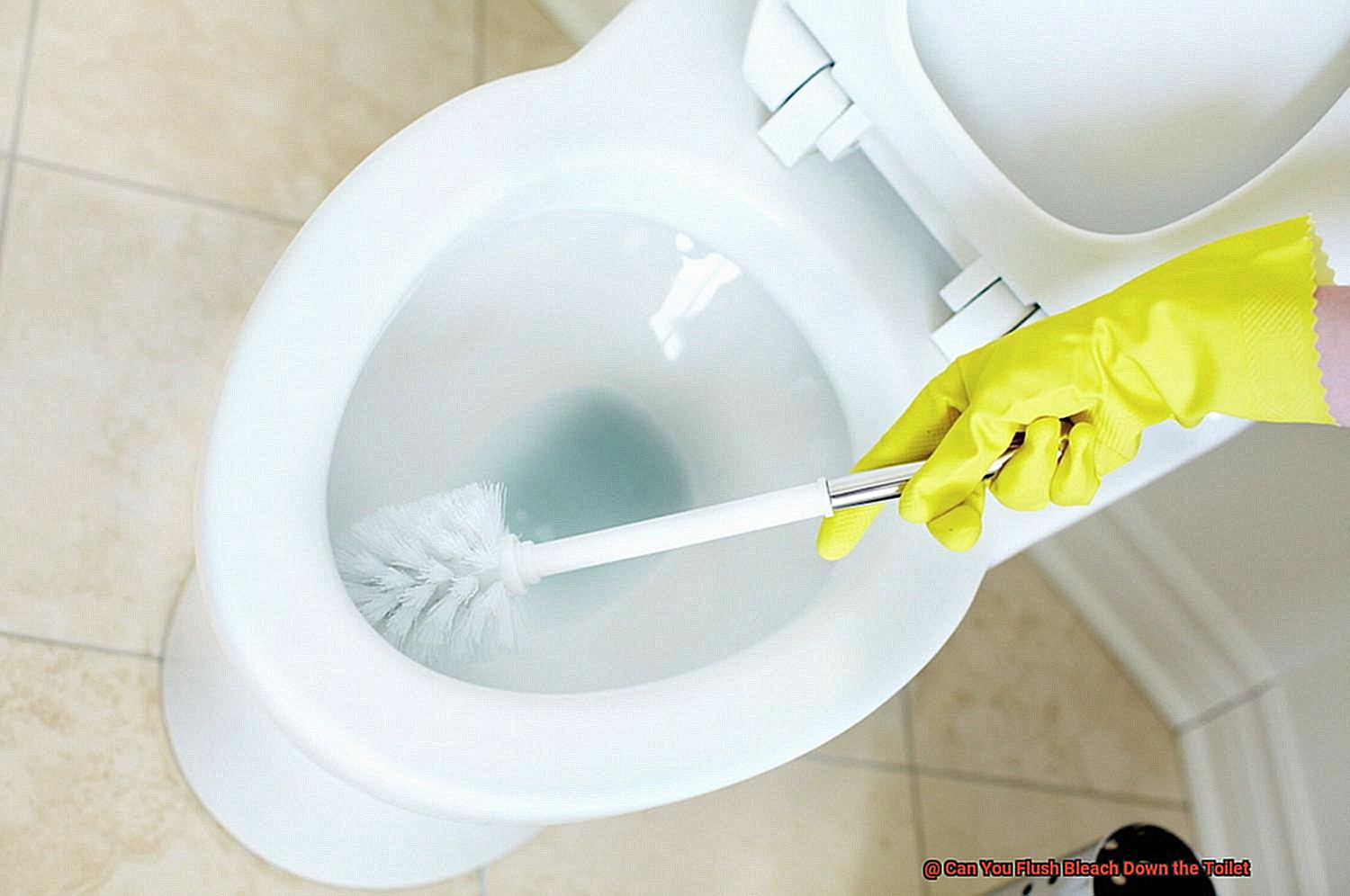
While bleach is undoubtedly a useful tool in keeping our homes clean and hygienic, it’s vital to handle it with care. Improper use of bleach can cause skin irritation, respiratory problems, and other health issues. That’s why it’s crucial to avoid mixing bleach with other cleaning products like ammonia or vinegar, as this can create dangerous chemical reactions.
It’s also essential to store bleach in a cool, dry place away from children and pets. When using bleach, it’s recommended to wear gloves and protective eyewear to avoid contact with skin and eyes. Remember: bleach is a potent chemical that should be treated with respect.
Why You Shouldn’t Flush Bleach Down the Toilet
While bleach is a highly effective disinfectant for your bathroom, improper disposal can have severe consequences. In this blog post, I’m going to highlight why flushing bleach down the toilet is a terrible idea and what you can do instead.
Firstly, think about your plumbing system. Bleach is an extremely corrosive substance that can erode pipes and fittings over time. This can lead to leaks, clogs, and even hefty repair bills. Furthermore, when bleach reacts with other chemicals in your plumbing system, such as ammonia or acids, it produces risky fumes that can harm your health. Therefore, flushing bleach down the toilet not only damages your pipes but also endangers your well-being.
However, it’s not just your plumbing system that’s at risk. When bleach enters the water supply, it damages the environment by killing off the beneficial bacteria that help sustain our ecosystems. It also contributes to the growth of dangerous organisms like algae that can cause fish kills and other negative impacts on aquatic life. If you have a septic system, flushing bleach down the toilet can disrupt the delicate balance of bacteria and enzymes that break down waste and keep the system functioning correctly.
So what are some alternatives? There are plenty of alternative cleaning products that are safer for both your home and the planet. Instead of using bleach to clean your toilet bowl or surfaces, try using natural cleaners like vinegar or baking soda that are just as effective without any harmful side effects.
You could also look for environmentally-friendly cleaning products specifically designed for use in septic systems.
How Can Bleach Damage Your Plumbing System?
Bleach is a popular household cleaner that many people use to keep their bathrooms and plumbing systems free of germs and bacteria. However, while bleach can be effective in disinfecting surfaces, it can also cause significant damage to your plumbing system if not used properly.
When bleach is flushed down the toilet, it can slowly eat away at your pipes over time due to its highly corrosive nature. This can lead to leaks and other costly repairs in the future. Furthermore, when bleach mixes with other chemicals or substances in your plumbing system, such as ammonia or rust, it can create toxic gases or other harmful by-products that pose health risks and damage to your home.
If you have a septic tank, flushing bleach down the toilet can also harm the helpful bacteria that break down waste in your septic system. This leads to clogs and backups that require expensive repairs.
To avoid these potential issues, it is best to dispose of bleach properly by diluting it with water and pouring it down the drain or taking it to a hazardous waste disposal facility.
You can also consider using natural cleaners like vinegar or baking soda that are equally effective as bleach without any harmful side effects.
Potential Health Hazards of Flushing Bleach Down the Toilet
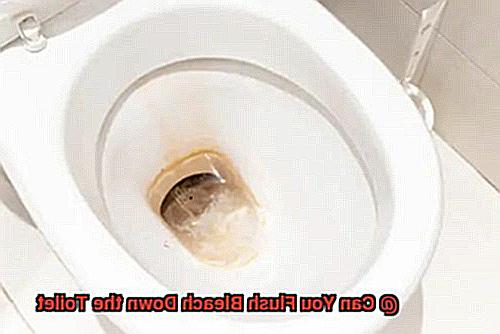
Not only is bleach a highly corrosive substance that can damage your plumbing and septic systems, but it can also react with other chemicals present in the pipes or septic tank, potentially creating toxic fumes or explosions.
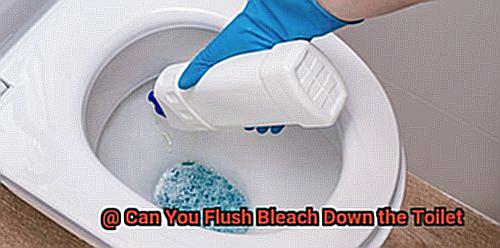
But wait, there’s more. Improper dilution of bleach can release harmful vapors into the air, causing irritation to your eyes, nose, and throat. Inhaling these vapors can result in coughing, wheezing and difficulty breathing. Moreover, accidental ingestion of bleach can be life-threatening as it burns your mouth, throat, and stomach lining, leading to severe pain and difficulty swallowing.
What’s worse is that flushing bleach down the toilet can harm the environment too. Bleach contains chlorine that reacts with organic matter in wastewater to create harmful byproducts such as dioxins and furans – highly toxic chemicals that can persist in the environment for years.
To avoid exposing yourself and your family to these potential health hazards, it is crucial to steer clear of flushing bleach down the toilet. Instead, opt for alternative cleaning products that are safer for your plumbing and septic system. And if you must use bleach, always remember to dilute it properly and follow all safety precautions.
It’s essential to be mindful of how we dispose of bleach because a little extra effort can make a significant difference in preventing potential health hazards for ourselves and the environment.
Safer Alternatives to Dispose of Bleach
When it comes to disposing of bleach, it’s important to remember that there are safer alternatives to flushing it down the toilet. As a knowledgeable expert in the field, I am here to share some of these options with you.
Firstly, you can dilute the bleach with water and then pour it down the drain. By doing this, you can reduce the concentration of the bleach and prevent any harmful effects on the environment. However, be sure to take caution when handling bleach, wear protective gear like gloves, and follow proper dilution instructions.
Secondly, chemical neutralizers such as sodium bisulfite or sodium thiosulfate are another option for disposing of bleach. These chemicals help to neutralize the bleach and make it safe for disposal in the trash. But please remember, it is essential to follow the instructions carefully as these chemicals can be dangerous if not handled properly.
Thirdly, if you have a large amount of bleach to dispose of, consider contacting your local hazardous waste disposal facility. They have the proper equipment and procedures in place to dispose of hazardous materials safely. This is especially important if you have a commercial or industrial-sized amount of bleach to get rid of.
Finally, consider using natural alternatives to bleach such as vinegar or hydrogen peroxide. These substances are less harmful to the environment and can be just as effective for cleaning and disinfecting surfaces. Not only are they safer for disposal but they can also be less expensive than commercial cleaning products.
O4vIutuaBFU” >
Conclusion
In conclusion, it’s important to handle bleach with care and dispose of it properly. Flushing bleach down the toilet can cause severe damage to your plumbing system and harm the environment. Its highly reactive and corrosive nature means that it can eat away at pipes over time, leading to leaks and costly repairs. Furthermore, when mixed with other chemicals or substances in your plumbing system or septic tank, bleach can create toxic fumes or harmful by-products that pose health risks.
Don’t fret though. There are safer alternatives for cleaning your home. Natural cleaners like vinegar or baking soda are equally effective as bleach without any harmful side effects. However, if you must use bleach, dilute it with water before pouring it down the drain or take it to a hazardous waste disposal facility. Remember always to wear protective gear like gloves and follow proper dilution instructions.
By taking simple steps towards proper disposal of household chemicals like bleach, we can protect ourselves and the environment from potential health hazards. Let’s choose safer alternatives for our homes and work towards creating a healthier future for ourselves and our world.

